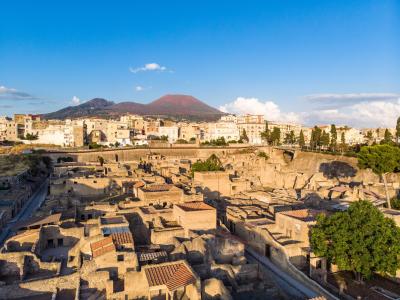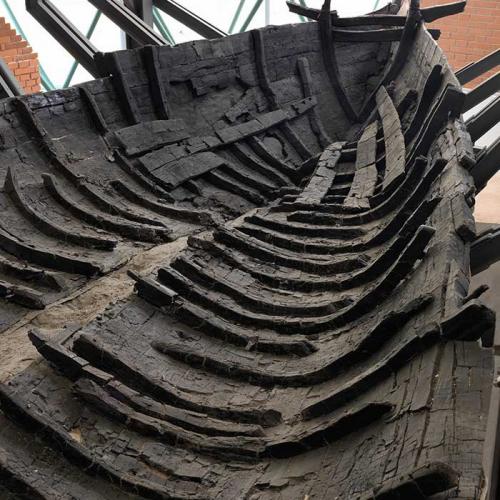AI breakthrough in deciphering Herculaneum scrolls heralds new research era

HERCULANEUM -- A revolutionary AI technology used to decode scrolls charred by the 79 AD eruption of Mount Vesuvius is now poised to unlock ancient mysteries worldwide, experts say.
Researchers in Italy used an AI-driven method to decipher the so-called Herculaneum papyri, a collection of about 1,000 scrolls discovered in the 18th century at the eponymous archaeological site south of Naples, in a villa believed to have belonged to Julius Caesar's father-in-law. Buried under volcanic ash for nearly two millennia, these scrolls have long tantalized scholars with their potential insights into ancient Roman life and thought.
This technological breakthrough has opened up new possibilities for deciphering ancient texts, with the impact going well beyond academic circles. It offers the potential to recover lost knowledge from various cultures and time periods, providing new insights into human history and thought. From ancient philosophical treatises to lost literary works, the range of possible discoveries is vast.
Attempts have been made to unroll the Herculaneum scrolls mechanically since the mid-1700s when they were first discovered, with varying degrees of success. This now-rudimentary process had mixed results, as it sometimes it worked well, but other times caused damage to the delicate scrolls. In the past year, researchers have been experimenting with a recently-unveiled AI-backed technique called virtual unwrapping which offers a safer, non-invasive alternative and allows the scrolls to remain undamaged, experts told Italian Insider.
The research team employs AI to generate images of the scrolls, highlighting the inked areas. The AI was trained to differentiate between sections with and without ink. Expert papyrologists then interpret these reproduced images. The initial set of deciphered scrolls revealed passages about music, food, and life's pleasures, likely authored by the Epicurean philosopher Philodemus.
"Virtual unwrapping provides new hope for Herculaneum papyrology, enabling the reading of rolls that were last read almost two thousand years ago before the eruption of Mount Vesuvius," said Federica Nicolardi, Assistant Professor of Papyrology and lead papyrologist on the research project. In addition, these "techniques will likely find further applications for other endangered manuscripts that are too fragile to be opened," she added.
This groundbreaking method, which is deciphering texts that have been unacessible for two millennia, could now be used to illuminate history's darkest corners - from fire-ravaged libraries to water-damaged manuscripts across the globe, leading papyrologists say.
"The new technology used for the Herculaneum papyrus can also be applied to other papyrus, such as carbonized ones in Petra, Jordan and to all those archaeological finds that have the same characteristics," said Gianluca Del Mastro, Papyrology Professor at the University of Campania Luigi Vanvitelli. "It's a real revolution for the study of antiquity."
The implications of this technology stretch far beyond Italy, promising to unveil lost knowledge from diverse cultures and epochs. As researchers refine these AI-driven techniques, the potential to rewrite history books looms large.
"Herculaneum was a prosperous and lively city, thanks to its privileged position on the Gulf of Naples. It was destroyed by the eruption of Vesuvius and today its ruins offer us a precious testimony of Roman life," Herculaneum site director Francesco Sirano told the Italian Insider in an interview. "All great libraries of antiquity contained thousands of papyri, but finding 1800 scrolls in a private villa in an archaeological site is an exceptional discovery."
The AI breakthrough came with the 2023 launch of the Vesuvius Challenge, a global competition offering $1 million in prizes to solve the problem of reading a portion of the scrolls. Led by Professor Brent Seales from the University of Kentucky and backed by Silicon Valley entrepreneurs Nat Friedman and Daniel Gross, the project provided software and 3D X-ray images of papyrus fragments and scrolls to research groups worldwide. It is currently ongoing with the next discovery deadline scheduled for August 31, 2024.
tb-lw

© COPYRIGHT ITALIAN INSIDER
UNAUTHORISED REPRODUCTION FORBIDDEN


